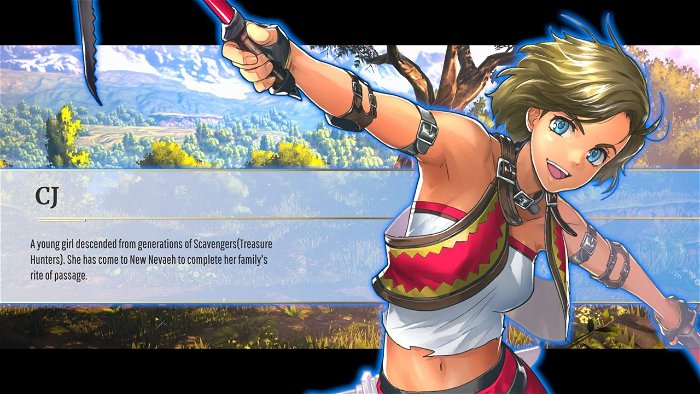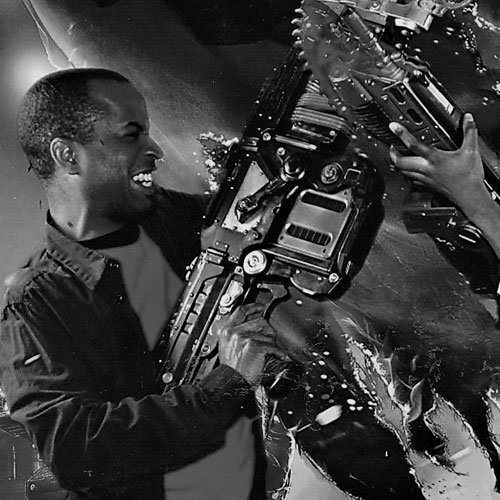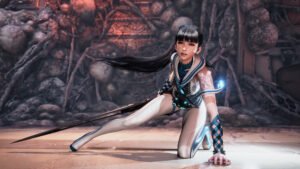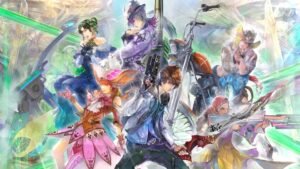Eiyuden Chronicle: Rising is intended to be a companion game to developer Rabbit & Bear’s upcoming JRPG, Eiyuden Chronicle: Hundred Heroes, which in itself is a spiritual successor to the popular Suikoden franchise, whose history stretches back as far as the original Sony PlayStation. Its first two instalments, Suikoden I and Suikoden II, enjoyed positive reviews and initially-slow but ultimately steady sales on Sony’s fledgling console. Even my younger brothers and I played them back in the day, as there were few options on PlayStation for epic, 2D JRPGs on the platform in the early going.
I especially remember being drawn to the first game in particular, thanks to its massive cast of 108 legendary heroes (based on Water Margin, the classic Chinese novel that inspired it), the painterly look of the character art, as well as the Super Nintendo-style sprite scaling and special effects that took place during battles on an isometric plane. Clearly, my brothers and I were not alone in our admiration for Suikoden, which would go on to spawn five sequels and become one of the most beloved RPG franchises of the PlayStation and PlayStation 2 era.
So, in the summer of 2020, when Yoshitaka Murayama, the creator of the original Suikoden and director of Suikoden I through III, announced that he was teaming up with several former contributors to the franchise to develop Hundred Heroes, it was hardly surprising that both casual and hardcore fans across the internet immediately stood up and took notice.

The Kickstarter campaign’s modest goal of reaching $500,000 was achieved in just three hours, steamrolling past all of its stretch goals and eventually reaching over $4.5 million from 46,307 backers to become the third-highest funded video game project on the platform behind Shenmue III and Bloodstained: Ritual of the Night.
In July of the following year, a 2023 launch window and official platforms for Hundred Heroes were confirmed, as well as the surprise announcement that Rabbit & Bear would also be releasing a prequel to the upcoming title in 2022 (Rising), an Action-RPG that takes place in the same world and timeline. Well, after having played Rising for the better part of an entire week, I’m quite convinced that they should have just stopped at Hundred Heroes.
As an Action-JRPG, Rising bears a much closer resemblance to games like Dragon’s Crown and Dust: An Elysian Tail than it does to the yet unreleased Hundred Heroes or any of the past Suikoden games for that matter. Both fighting and exploration take place on a 2D plane across painstakingly created artwork panels and are combined with detailed, interactive sprites to create the game’s fantastical environments.

Dragon’s Crown in particular comes to mind when describing how the game’s many different areas connect; each area of the game is like an oil painting that initially has only two or three ways for the player character and/or party to enter or exit, while other visible paths are either inaccessible or are simply window dressing. As players progress through the story, meet new characters and receive new missions, however, many of those visible paths will unlock and grant access to new areas, gradually expanding the game world like an expanding jigsaw puzzle crossed with a maze.
What’s unfortunate about this approach to world traversal though, is that it is heavily dependent on backtracking and runs the risk of becoming extremely rote when other elements of the game aren’t compelling enough to support it. Sadly, Rising fails this test in many areas.
“As an Action-JRPG, Rising bears a much closer resemblance to games like Dragon’s Crown and Dust: An Elysian Tail than it does to the yet unreleased Hundred Heroes or any of the past Suikoden games for that matter.”
Evidently, one of them is the story. CJ, a young girl from a community of scavengers (a.k.a. Treasure Hunters), has just arrived in the town of New Nevaeh, a mining community that has recently suffered a series of earthquakes. These quakes have unearthed many valuable artifacts, treasures, and mysteries from the past, which have drawn both honest adventurers like CJ as well as other undesirables into the area, like thieves and bandits.

Monsters have also emerged from the mines as well, destroying property, attacking, and sometimes killing some of the town folk. In order to stop New Neveah from descending into chaotic ruin, the acting Mayor, Isha, has enacted a regulatory “stamp card” system aimed at incentivizing honest treasure hunters to assist with the town’s rebuild while also protecting it from bandits.
In exchange for completing a stamp card (which is essentially a quota of odd-jobs and favours that the citizens of New Neveah need assistance with), Outlanders are rewarded with an official Hunter’s License, which grants them access to the mines and fair compensation for the treasures they find at the local pawn and trade shops. And, oh joy, they get an even BIGGER stamp card! CJ, who is on a rite of passage to find the biggest Rune Lens artifact that her clan has ever seen, inevitably teams up with the buster-sword wielding “beastman” Garoo (who is half-human, half-kangaroo) to uncover the treasures and mysteries that await in the mines.
If you haven’t guessed it already, the stamp card mechanic plays heavily into the game’s progression, drip-feeding players one tedious fetch quest after another as CJ risks her neck doing other people’s dirty work. And since the town has been completely upended by the recent quakes and the appearance of monsters in the area, just about every fetch quest on CJ’s stamp card involves rebuilding the businesses that she and her allies will need to upgrade and improve their weapons, armour, potions, magic abilities, and the like, so practically none of them are optional.
Your first four to five hours then will involve running CJ and Garoo back and forth across a small number of areas over and over again ad nauseum until you unlock a new path, rebuild a new business, or trigger the next chapter in the story by completing a prerequisite goal, such as defeating a new boss for the first time.

It should be noted that while Rising is not in any way a “roguelike,” dungeon bosses respawn on subsequent visits just like regular enemies and can be fought again, and some fetch quests will actually require you to revisit and kill previously defeated bosses to acquire resources. In other words, expect a LOT of repetition, retreading old ground, and skipping through copious amounts of trite dialogue.
Getting back to the narrative, while the premise itself isn’t necessarily bad, the writing team at Rabbit & Bear fail to do anything compelling with what they’ve been given. It’s mentioned on several occasions throughout the game that CJ is just 15 years old and Rising appears to be written precisely for that mindset. Much of the banter between Garoo, CJ and other characters, such as Isha, or “Magical Girl” Mellore is simply childish and rarely endears one to any of the main cast. But that’s far from the worst of it.
“Getting back to the narrative, while the premise itself isn’t necessarily bad, the writing team at Rabbit & Bear fail to do anything compelling with what they’ve been given.”
Beyond the surface details, there are no real emotional stakes to convince us to actually care about CJ, Garoo, or what they’re ultimately after. Isha, a magic wielder who eventually signs on as the game’s third playable character, has a bit more skin in the game in the form of her missing father, but her plight doesn’t save her from being a complete bore as a character and travel companion.

My next gripe is a bit more subjective, but I have to insist on mentioning it as it definitely impacted my enjoyment of the game in a negative way. For some reason, Rabbit & Bear have chosen to follow an animation trend with Rising that has unfortunately become increasingly popular in mobile games, resulting in Rising featuring some of the worst animation I’ve seen in a JRPG (Action or otherwise) in a LONG time. Rather than fully animate the actions of characters, enemies and bosses with unique sprites per frame, Rising cuts corners by instead manipulating (i.e., stretching, warping and rotating) an individual sprite or part of a sprite to create the illusion of motion, and the effect quite honestly comes off looking rather cheap.
As a consequence, even the simplest of gestures, such as CJ pointing an accusatory finger at Garoo or handing over an item to an NPC, lack the appropriate amount of detail to represent such actions because CJ’s sprite lacks fingers and thumbs, resulting in CJ looking like she’s constantly fist-bumping other characters. Regrettably, Rising also employs weak character art with pixelated edges that clash against the much sharper, more detailed 3D elements in its environments.
“Beyond the surface details, there are no real emotional stakes to convince us to actually care about CJ, Garoo, or what they’re ultimately after.”
It’s truly puzzling to me that Rabbit & Bear went this route knowing that they were crafting a companion piece to next year’s Hundred Heroes, which, despite still being a year out from now, features far stronger character art, uses traditional animation methods and borrows much of its visual design from the more appealing, pixelated tilt-shift presentation made popular by Octopath Traveler.
On the bright side, once players have all three principal characters in their party, Rising delivers fairly competent 2D action with mechanics that are easy to get into. CJ, Garoo, and Isha’s attacks are tied to the Xbox Controller buttons X, Y and B respectively, and pressing each button will not only swap out the current on-screen character with the appropriate ally, but when timed correctly during an attack, that character can be “tagged in” to extend a combo string, maximizing damage and leaving enemies and bosses alike vulnerable to follow-up critical hits.

Many opponents’ lifeless bodies can even be juggled for additional hits well after they’ve already been dispatched, which is always entertaining, and each of the three characters possess a unique special ability that can be exploited in various ways. For example, CJ’s “Quick-step” ability allows her to briefly pass through enemies, so she can get behind or close distance with them in battle, but it can also be used in combination with jumps, “Two-Point” jumps (read: double jumps) and/or actions performed by her allies to traverse dangerous gaps or access difficult to reach areas while platforming.
Outside that, however, the mechanics in Rising are incredibly middling for an AJRPG. Characters gain XP and level up, but players get no say in how that XP is distributed, so it might as well mean nothing at all. The same goes for the game’s self-lauded “Town Upgrading” feature; players don’t get to decide what, when or how things get built in New Neveah; they simply unlock new establishments via linear progression with no sense of agency involved whatsoever.
Likewise, the other hooks that usually keep players engaged in your average run-of-the-mill AJRPG or JRPG deliver just the bare minimum. In combat, several bosses and stronger enemies have shield gauges that must be broken through before players can deal damage to their actual health, and take on significant damage when struck by attacks that are buffed with an element that they are weak against, etc. Pretty bog-standard stuff we’ve all seen before. Level variety is predictable; there’s a forest, a mine, a snow level, a lava level, and so on. The orchestral soundtrack is just okay, but it gets repetitive quickly and is even sleep-inducing after an hour or so of play.
To mercifully wrap things up, Eiyuden Chronicle: Rising is a decidedly average Action-JRPG that feels more like an obligation – a seemingly forced fulfillment of one of the developer’s unwritten Kickstarter stretch goals rather than a necessary companion piece to the upcoming Eiyuden Chronicle: Hundred Heroes. As Rising will launch Day One in Xbox Game Pass and promises tangible rewards who complete it before playing Hundred Heroes, it might be worth a look to Game Pass subscribers that still remain optimistic (as am I) about next year’s game despite my above complaints about its prequel, but otherwise I’d recommend a “hard pass” entirely.





